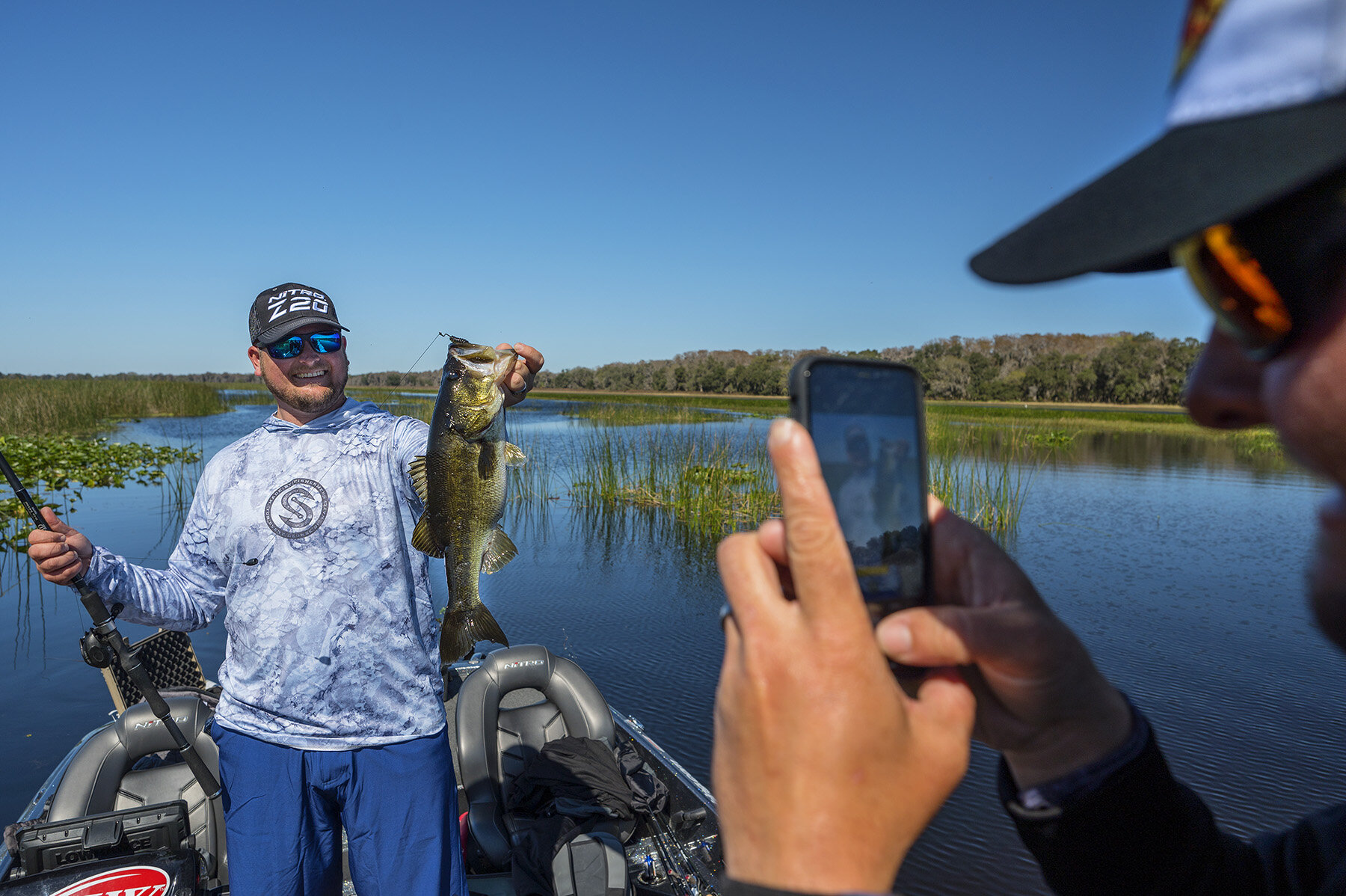When To Flip A Jig
/Question: When's the best time or situation to flip a jig? -Hunter
Answer:
Jigs, like the Zman Project-Z Flip N' Cast Jig, are excellent flipping baits, but they have a time and place.
This is a really good question!
There are a myriad of bait choices for flipping, pitching and punching, so choosing the right one can be tricky at times.
I admit, roughly 85-percent of the time I turn to some sort of soft plastic, or ElaZtech, bait design for my flipping needs. However, a jig is still one of my favorite baits to flip in certain situations.
Here are some of those situations.
Hard Cover
Flipping jigs are made to go through cover with minimal snagging due to the brush guard that is built in to most jigheads. With that being said, due to their bulk, jigs are much less efficient at snaking through cover than a Texas-rigged soft plastic, which is why I don't use jigs very often in thick vegetation. However, when I am faced with hard cover, like wood or rock, a jig gets my vote.
When it comes to hard cover, there is generally less density for a jig to have to weave through, and with the jig's bulky profile and bulbous jighead it also has the added benefit of momentarily hanging on cover, allowing you to slowly shake it in place if it briefly got hung on a branch- which is often a productive technique for inactive fish that need a little extra coaxing.
When it comes to flipping to lay downs, stumps, dock posts, rocky banks or other hard cover, jigs are a key player.
Slo-Mo
As I mentioned before, jigs are designed to be a bulkier presentation, which means that they are going to have a slower rate of fall compared to similarly weighted plastics.
With this fact in mind, I like to turn to jigs when a slower fall is needed- like during cold, or muddy, water situations.
If I am fishing in either the early spring or late fall when the water is cooler, or anytime I'm presented with muddy water, a jig is a good choice because the fish have a much smaller strike-zone, and jigs stay within that zone longer.
It's A Bream Thing
Finally, one of the biggest reasons to reach for a jig is when bluegill, or bream, are the main food for the bass. Yes, traditionally jigs are thought to be crawfish imitators, but when it comes to vertical flipping techniques, the jig takes on the role as a bream look-alike.
Jigs (once again due to their bulky profile) imitate bluegill extremely well, and anytime there are big bass feeding on these meaty morsels, I will try a jig with a beaver-style trailer, with the tail dipped in a little chartreuse dye.
If you match your jig to the panfish, the hogs will come!
Overall, these are the major factors that contribute to choosing a jig over other flipping presentations, but don't be afraid to experiment and try a jig in other situations that I haven't outlined here.
Seek the bite!
-Sonar















